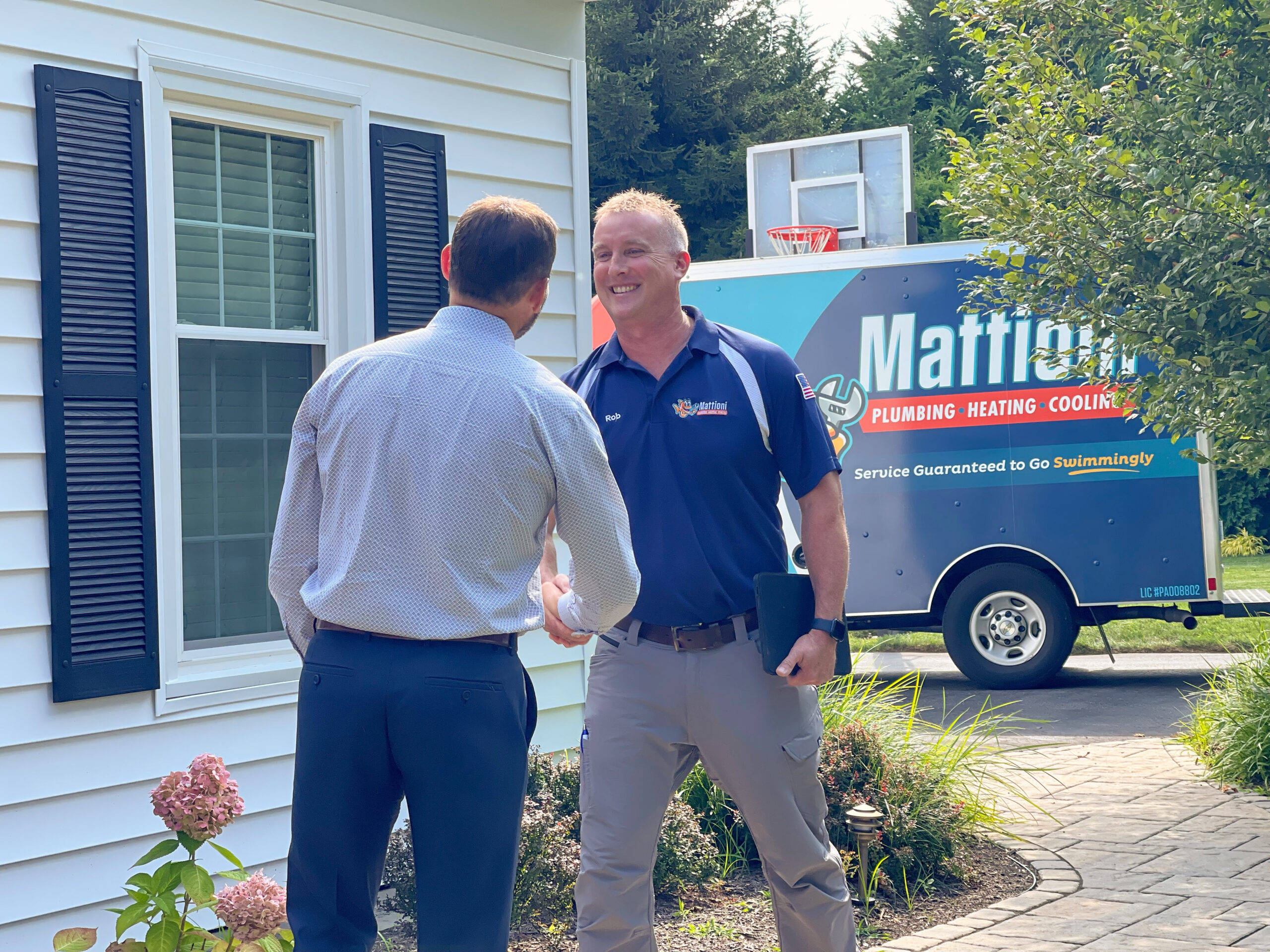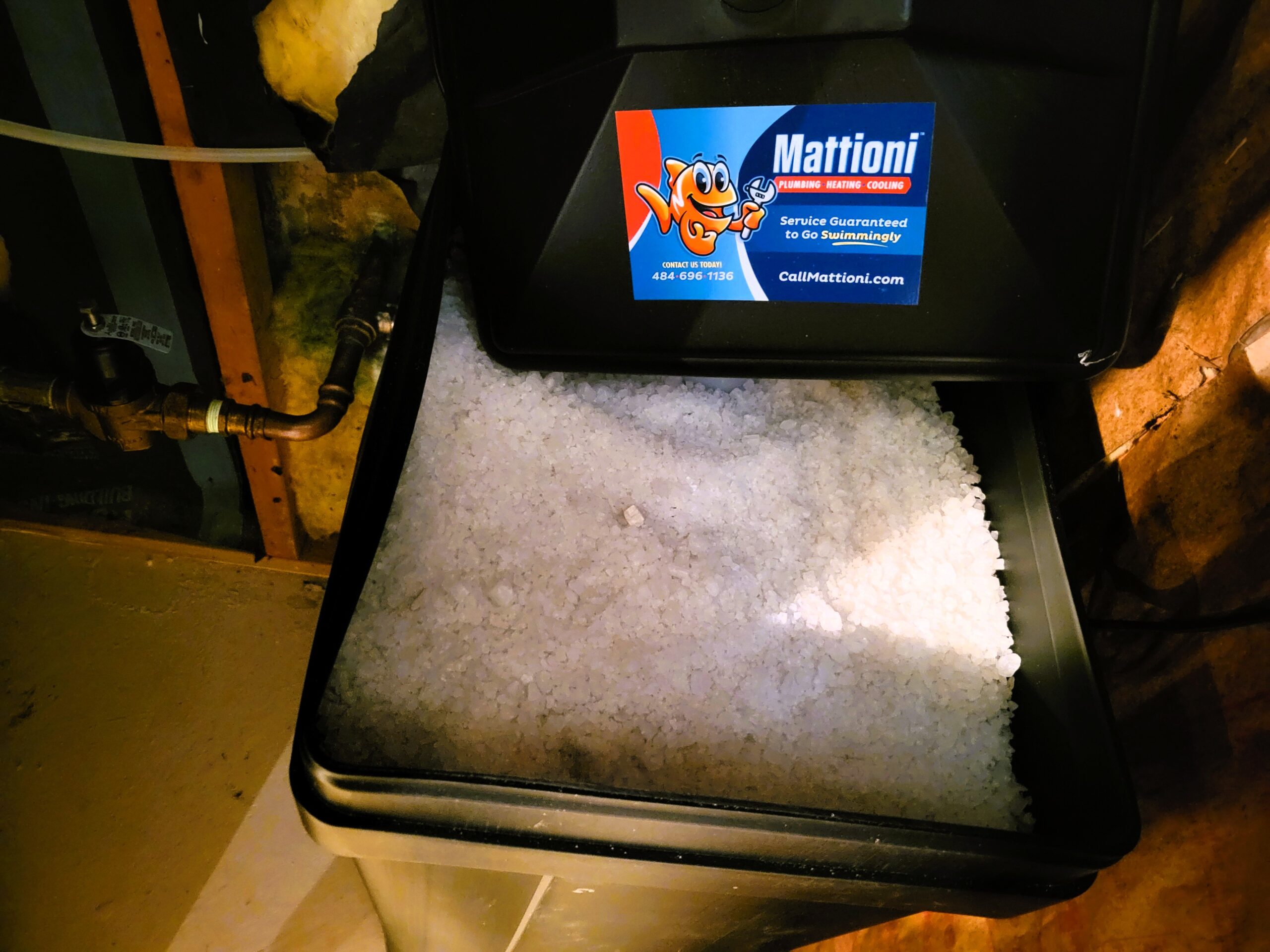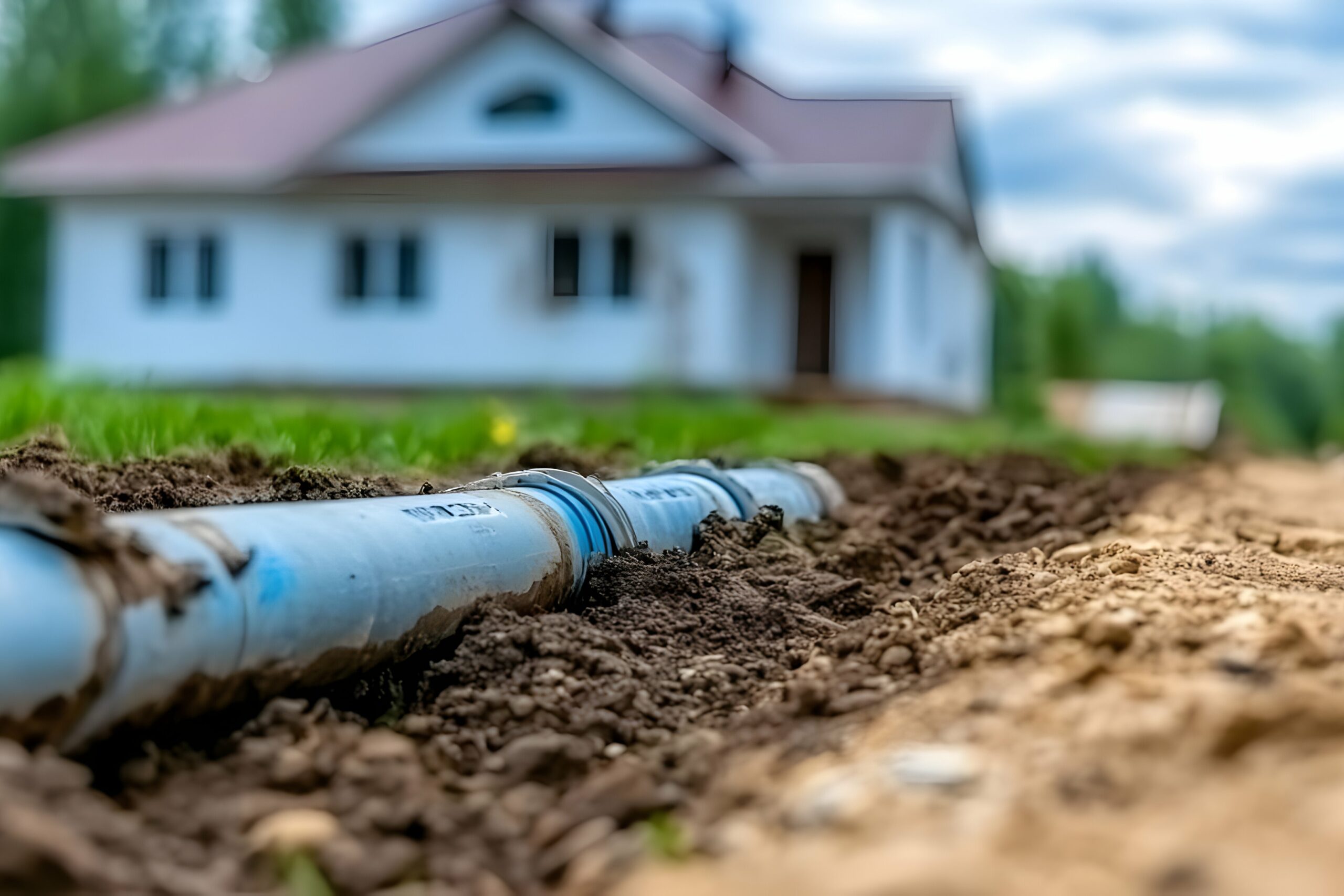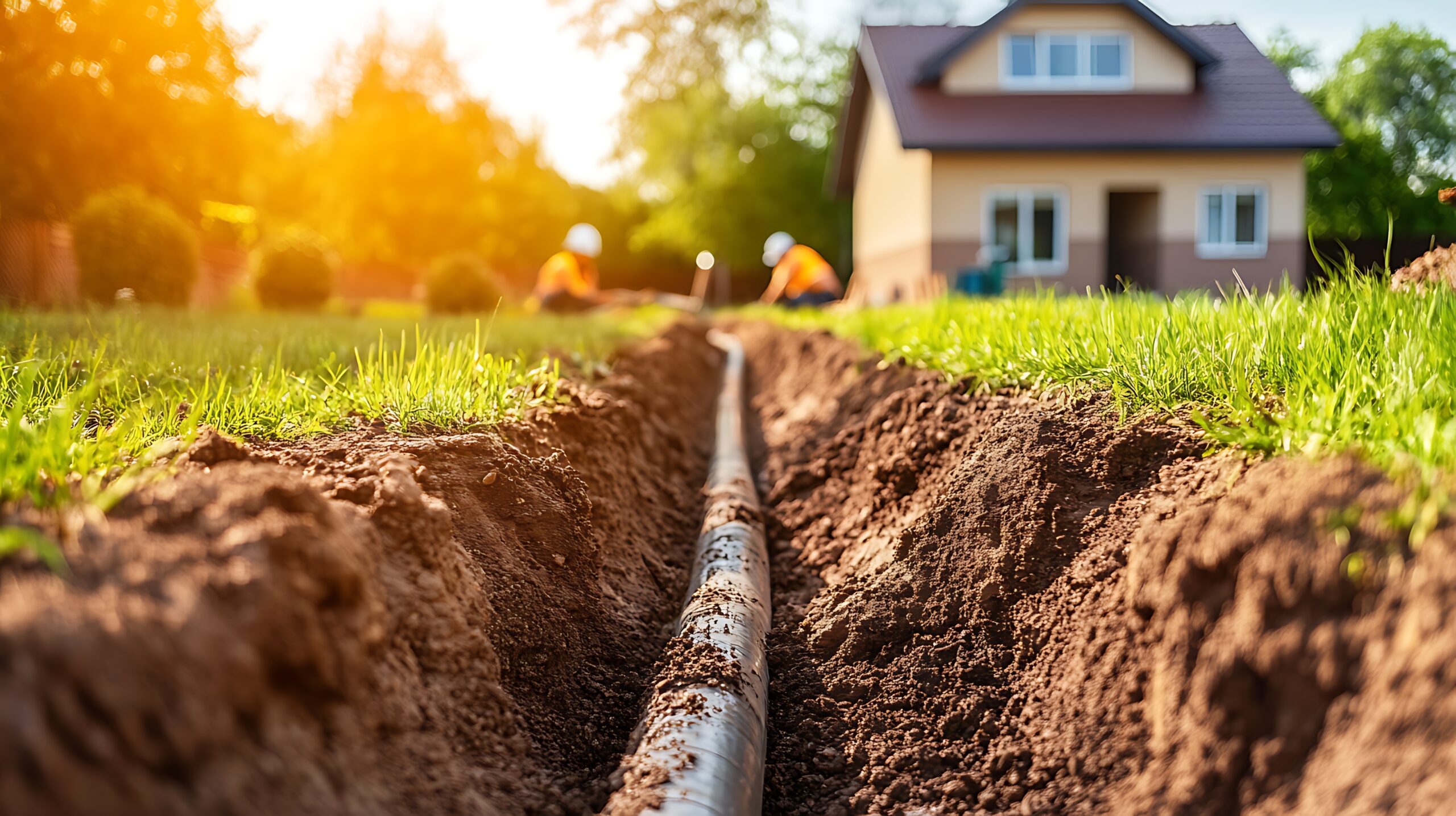|
Getting your Trinity Audio player ready...
|
Last Revised: 2/19/2025
Have you noticed stubborn spots on your dishes, rough skin or hair after a shower, or scale buildup on your faucets? If so, you likely have hard water, and you’ll need a water softener to address the problem.
But how does a water softener work? Most water softeners use a process called ion exchange, which involves two separate functions: (1) the water softening process and (2) the regeneration process.
By understanding how your water softener operates, you’ll be prepared to maintain the system and resolve any issues quickly, promoting its longevity.
At Mattioni, we’ve helped homeowners solve hard water problems for over 75 years. In this article, you’ll learn how a water softener works using ion exchange, understand the regeneration process, and explore a few other water conditioning options. By the end, you’ll have a full understanding of how water softeners work, and you’ll be prepared to pick the right system for your home’s needs

How Ion Exchange Water Softeners Soften Water
At its core, ion exchange is a process in which sodium or potassium ions replace the calcium and magnesium ions in your water supply. Ion exchange is universally considered to be the most effective and reliable method to soften water with the fewest side effects – making it the most popular among homeowners dealing with hard water. Here’s how it softens water:
The water softener contains two tanks. The first is a storage tank that holds salt crystals, and the second is a tank of resin beads (small plastic beads designed to attract and hold specific ions.) The tank of resin beads is where the water softening happens.
The system supersaturates the resin beads with sodium as brine (a saltwater solution produced from the salt storage tank) passes through the tank and charges the beads. At this point, sodium ions are loosely held onto the resin beads.
Here’s the key part: Then, as hard water (from your supply line) enters the system, it passes through the bed of charged resin beads, and its calcium and magnesium ions kick the sodium ions off the resin and take their place. The sodium ions (which have just been kicked out into the water) then take the place of the hard water minerals within your water, thus resulting in soft water leaving the system and heading throughout your home. This is the core process for softening water with ion exchange.

How Water Softener Regeneration Works
As your water softener continues to soften water, the sodium ions stored on the resin beads become depleted. After some time, the system will no longer be able to soften water, and the resin beads will need to be recharged with new sodium ions. We call this the regeneration process, which takes about 2 hours to complete. Here’s how it works:
Fill
Brine is a saltwater solution that’s needed to clean and remove the hard water minerals that now occupy the resin beads. But first, the brine needs to be made. This is done by flowing water into the salt storage tank and letting it sit, usually for about 60 minutes. This is the fill stage and is the first step in the regeneration process.
Brining
Once the system has made the brine, it’s brought from the salt storage tank into the resin tank where it serves as a cleaning agent to remove hard minerals from the resin beads. This step can take from 30 to 90 minutes and is the part of the process that “recharges” the resin beads with sodium ions. Once it’s completed, the hard minerals and brine are disposed of into the drain.
Brine Rinse
Once the pre-set amount of brine is used to recharge the resin beads, the brine valve closes and water (rather than brine) now enters the resin tank, flushing any remaining hard minerals and brine from the resin tank into the drain.
Backwash
At this point, water is sent backwards up into the resin tank to flush out any sediment or other solids that are still present in the system. These solids are flushed down the drain. The time this step takes is usually about 10 minutes.
Fast Rinse
The last step in the regeneration process is a fast stream of water down into the resin tank, which rinses out any remaining brine while also setting the resin beads into place. This step takes roughly 10 minutes. Once it concludes, the system returns to softening water until the regeneration process is needed again.
Not sure how often your softener needs to be regenerated? Click here to learn the simple formula.
Other Water Conditioning Systems That Combat Hard Water
Understanding how ion exchange water softeners work is crucial as you search for the system that best matches your needs. While ion exchange water softeners are accepted as the most effective solution to hard water minerals, you may find another water conditioning system helpful if you have other wider concerns about your water.
Now, let’s take a broader look at some of the other approaches to combatting water quality concerns.
1. Salt-Free Water Conditioners
Instead of using sodium or potassium ions to replace calcium and magnesium, salt-free systems use a chemical process to crystallize these minerals without removing them.
This method is very effective at preventing scale buildup within your plumbing system – pipes, water heater, etc. It can help you avoid costly repairs and support the longevity of these systems. However, it does not actually soften your water, meaning the water you use for drinking, cooking, and showering will be unchanged.
For this reason, salt-free systems are referred to as water conditioners instead of water softeners.
2. Distillation Water Softeners
In a distillation system, water is boiled, evaporated, and turned into steam which is then carried through tubing and re-condensed in a different tank. This process removes virtually all impurities in the water, including dirt, sediment, and bacteria, along with hard water minerals.
This process is more time-consuming than ion exchange systems, making it unrealistic for use throughout your home’s entire water supply. It can be, however, effective for point-of-use tasks, such as creating drinking water at one sink.
3. Magnetic Water Conditioners
Magnetic water conditioners, much like salt-free systems, don’t remove hard water minerals. Rather, magnetic systems polarize your water to prevent scale deposits from occurring in your home’s plumbing system. While it does not soften your water, a magnetic system can protect your pipes and appliances, like your water heater.
What’s interesting about magnetic systems is that by polarizing your entire water supply, they also remove existing scale buildup within your pipes and plumbing system.
4. Reverse Osmosis (RO) Water Filters
RO is an inherently different water filtration process that targets and removes several contaminants – including hard water minerals. These systems are often recommended for homes facing wider concerns about their water quality and may not match the results of an ion exchange water softener for removing hard water minerals.
Reverse osmosis also wastes a significant amount of water and may require you to wait for more filtered water times of the highest use.

Your Water Softener Installation: Next Steps
Hard water can cause spots, buildup, and skin irritation, but now you understand how water softeners work to combat these issues with ion exchange. If you’ve been dealing with spots and stains on your dishes, or dry skin after showering, then installing a water softener can make a big difference.
In most cases, an ion exchange water softener is the right choice, although there are a few different options that could potentially be a better fit (depending on your water quality).
Still not sure which system is right for you? Click below to calculate which softener capacity fits your home’s needs.
Softener-Sizing-Calculator-Mattioni
Don’t forget that improperly or haphazardly installed water softeners can lead to problems of all shapes and sizes. If you lack plumbing knowledge and experience, hiring a professional plumber will ensure that your system is set up properly and that you don’t encounter any unforeseen issues.
For answers to questions about how water softeners work or how they’re installed, contact our friendly team at (610) 400-8510 or by booking an appointment online. We have over 75 years of experience providing homeowners with water softening solutions – and we’re here for you too. Call now for a personalized recommendation.




